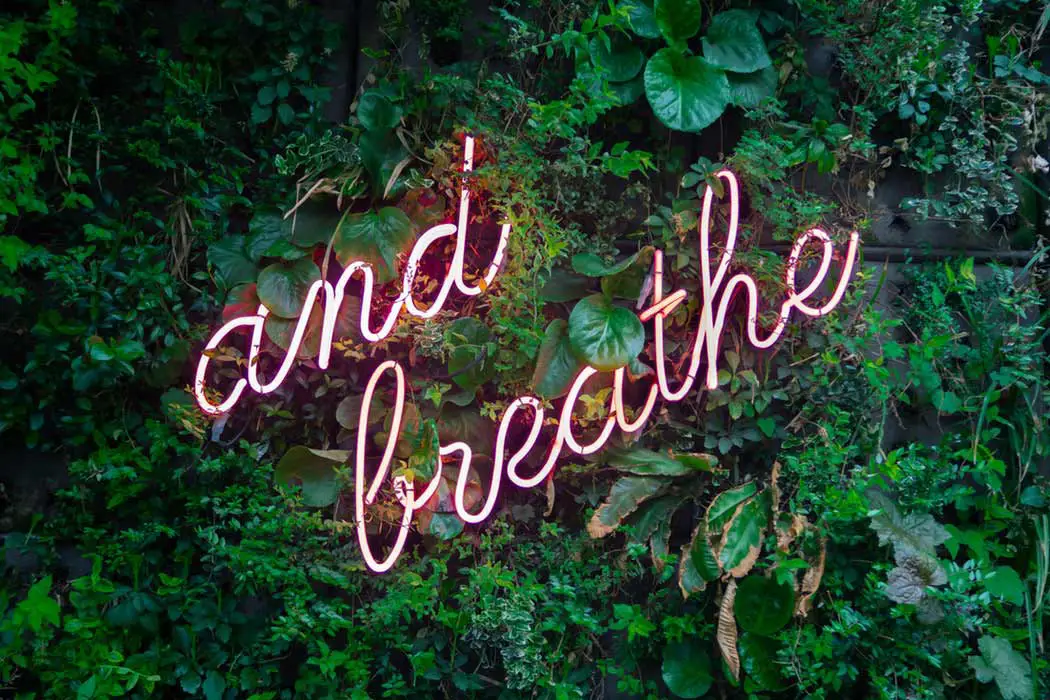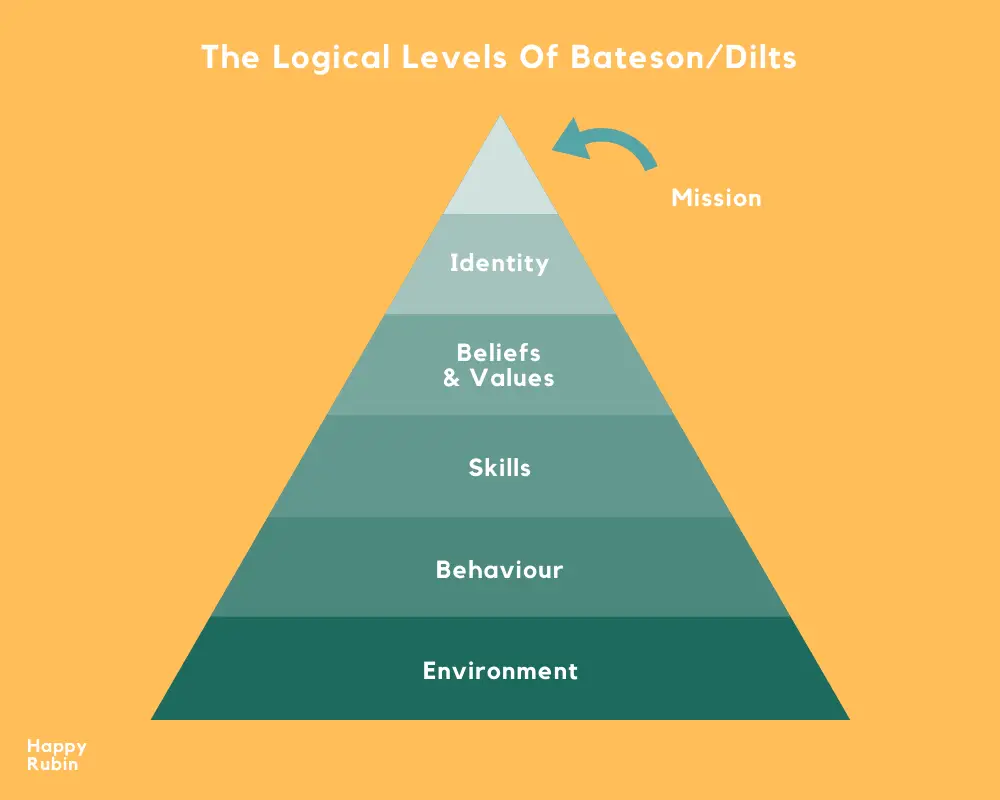![How To Deal With Sensory Overload [9 Tips For Overstimulation]](https://happyrubin.com/wp-content/uploads/2019/12/ik-ben-overprikkeld-150x150.jpg)
How To Break & Change Bad Habits [22 Best Tips]
![How To Break & Change Bad Habits [22 Best Tips]](https://happyrubin.com/wp-content/uploads/2018/11/gewoontes-hoe-doorbreken.jpg)
Do you want to change, unlearn and break a (bad) habit and learn different behavior instead? In this article you will learn via 22 effective tips how to unlearn old habits. Read along…
Contents of this page:
Tip 1 – How do you get rid of bad habits? Start with the ‘how question’ to gain self-knowledge
Before you attempt to change anything, it is helpful to know what exactly happens when we are talking about an unwanted habit. In short, we analyze exactly how you ‘do’ the unwanted habit.
If you are being coached in this, an ingenious coach would even ask you:
Teach me! How exactly do you do the problem? Suppose I could trade with you for a day. Can you teach me how I experience what you experience? ‘
Why does this work so well? Learning implies that you can also unlearn it. Now it is also implied that you are an expert in your problem. If you can explain it to someone as if you were an expert at it, it implies that you have so much control over it that you can also deconstruct it.
Such an analysis in which you investigate exactly how you do something is also called the strategy or TOTE elicitation . Don’t judge it but look at it objectively. What is happening now? It is the ‘how’ question is very important.
- How (specifically!) Do you do it?
- How (specifically!) Do you know it’s time to get the habit?
- What do you see, hear, think or feel first?
- What next? And what after?
- When will it end?
How do you know it’s time to get your acne? When you think about giving a presentation, what do you envision?
Anyway, now we know exactly which small steps the unwanted behavior consists of. As a result, we can now perform an intervention in a very targeted and precise way to break this entire pattern.
Tip 2 – Now that you know where things ‘go wrong’, you can break the pattern in a targeted manner

If you know exactly how to do the unwanted behavior and which steps it is made of, you can eliminate a specific step or replace it with another step, so that the old pattern cannot be initiated further. That is where the homework task is given.
The best way to improve your self-control is to see how and why you lost your self-control.
– Kelly McGonigal
For example, I learned in the previous tip that I know it’s time to touch my acne when I’m standing in front of a mirror without a shirt. Now I can break this pattern through, for example, the following ‘homework tasks’:
- No more standing in front of mirrors without a shirt.
- Do something completely different when standing in front of a mirror.
- Disrupting the visual trigger with an auditory trigger. For example, by always turning on music in the bathroom or by singing a song every time I stand in front of the mirror without a shirt.
- Do another pattern break (here are 48+ examples).
- A formal technique that includes a pattern interruption, such as the Swish technique or the Behavior Generator technique, including a contingency plan for when you recognize your first signs of relapse.
Breaking behavioral patterns? Then apply a pattern break. Sing a song or do a dance!
Why is it important to break the pattern If you do something else, the “neural path” of the old behavior gets weaker and you build a new neural path for the new behavior. So from now on, when you come across the situation where you display the old behavior, it is really time to do something different so that that new neural path can actually emerge.
Break your restrictive pattern relentlessly and rigorously. Like a scratch on a CD – then you can’t play the old song anymore.
And don’t stop at once. The more you do a pattern break, the more your system gets used to shifting your focus to something new and meaningful. This makes it easier to ‘walk the new path.’
If you constantly interrupt behaviors or moods while they want to set themselves in motion, the pattern cannot possibly be fired and continued.
Tip 3 – Go through the initial pain to break that unwanted pattern

This is Marie. She should actually write a birthday card for her grandmother and post it, but she’s been putting it off for a long time. She feels an inner sense of resistance, and instead of the difficult task of countering that resistance, she’s going to play Candy Crush for several hours to escape it.
She feels pretty good, but then it happens … a dirty and guilty feeling inside. And this feeling of inactivity is far worse than the pain of breaking the resistance to write the card for her grandmother.
It takes a lot of discipline and willpower to break through your pattern those first few times and create a new ‘neural path’. Those first few times when you make that new link are difficult, painful and uncomfortable, but you really have to do it or you will be in for a much greater pain …
Opt for the initial pain so you don’t get the much worse pain of inactivity
Tackle that, get stronger and be someone who accepts uncomfortable situations. Because the pain of inactivity is much more painful and slower , even if you don’t notice it immediately. Your whole life will improve if you just directly deal with that discomfort by displaying the desired behavior.
It’s worth working through that initial resistance to get your positive outcome because it just gets easier every time.
The more times you manage to break through your brain’s initial resistance, the easier it will be in the future.
Tip 4 – Use the power of ‘novelty’ to change habits

Novelty also works effectively because it acts as a pleasant pattern break. Life becomes fun, easy, and interesting when we regularly do something in a different way or do something else at all.
Milton Erickson often applied this principle by giving his clients homework assignments that drew all the attention. One of his clients never dared to drive out of town onto the highway. Erickson gave the following as homework: “Put on your best suit on Sunday, hit the highway, stop on the emergency lane, and then get out every mile and lie in the gutter along the road.”
This pattern interruption took all energy and attention away from the problem! Every time the woman drove on the highway from now on, she had a completely different routine from now on. As her routine changed, the bad habit (not daring to drive out of town) changed with it.
You do bad habits under the same circumstances every time. There is some sort of routine involved. That makes sense, because otherwise it would not have been a habit. So inject some new into your routine. Find new ways to live your life and there is a good chance that bad habits will change with them.
So again: the intention of this tip is not to directly change that bad habit , but to change something else in your routine / life that changes the bad habit.
- Suppose you suddenly decide to get a puppy. Then so many routines in your life will change so that you will no longer even ‘pay attention to your bad habits.’
- Maybe you are challenging yourself to strike up a conversation with someone at work you don’t know very well.
- Or maybe you change your exercise schedule – how, when, where or with whom you train; or which exercises you normally perform.
- Or maybe you change your diet by trying new dishes or combinations of dishes.
- Go on a trip, take a long walk in nature.
- You may want to consider applying for a new job or going back to school to pursue a subject you forgot or previously dismissed as impractical.
- And so on with coming up with new things. Just do things differently.
Tip 5 – Break undesirable habits not with your thoughts, but do it with deeds
Do n’t use the passive, purely cognitive approach to change your habits. Those negative habits are created – and are maintained – by your thoughts , or ego. Do you want to fight your thoughts with thoughts? Good luck with that … Your ego then plays a home game that will always win it.
Because if you are going to tell that little thought devil of your thoughts: “Now I will quit smoking and I will never smoke again!” Then that little thought devil is very good at making up excuses to keep smoking: “Now there are visitors, now I deserve it for a while, I have stress, I can allow myself because I have an emotional hard time, one Surely once … “
You can’t fool that little thought devil, because it always knows exactly what you’re thinking. Because it is your thoughts. It will immediately see, see through and parry all your tactics to keep winning. You just give them up when you use your thoughts.
So don’t play this battle in the domain of conscious thoughts. Then you have no chance against the ego. You should n’t think about it … You should n’t say it and resolve it …
The voice that got you in trouble is not the one that is going to get you out.
You just suddenly something else to do ! The ego has no insight at all into what is being done. for the ego only lives in the domain of thoughts.
Overwhelm the thinking mind with action.
– American saying
Perhaps for some people it is easier said than done, doing that. Fortunately, there are a number of effective ways to actually do something about your old pattern:
- A handy way is a literal pattern break , because you do. If necessary, take a look back at tip 2 about pattern breaks.
- Another way is the baby steps method . See next tip …
- For the most powerful result, you also work with your subconscious mind . From tip 8 of this article you will find ways to deal with this.
The most likely reason you haven’t had a breakthrough yet? You are still in your head and you are not really feeling it yet.
Tip 6 – Take baby steps by applying the Kaizen method

What is the baby steps method? Let’s take the example of smoking. You don’t have to quit smoking completely. You just do n’t have to light a cigarette anymore. Or just today. After that you have already passed. Don’t stop forever, just for a day.
This actually changes your behavior, instead of just thinking. You are actually doing something. It doesn’t matter that it’s a small act. That’s already worth a thousand times more than just thinking about change.
- Just work on something for two minutes.
- Just read a single page of a book.
- Only do two (minutes) push-ups.
If you make it longer, more or more difficult, you let yourself talk out.
What is the first small step?
If you are a nail biter, you can continue with your habit by enjoying yourself on 9 fingers. You save one. This too is a baby step to good habit.
Moments later, the next baby step comes. Now you can keep your nail diet on 8 fingers. This is the Kaizen method that Milton Erickson also used a lot when giving homework tasks to his clients. You gradually reduce this so that it does not feel like you are rigorously giving a habit.
It is sometimes surprisingly easy how with a small change, you can change big things.
The books ‘The Slight Edge’ and ‘The Compound Effect’ also show how you can make dream after dream come true through mini-steps.
Tip 7 – Do not be strict with yourself: nothing is wrong and it is going well!
Combine the previous tip about Kaizen (baby steps) with a non-strict attitude to yourself. You can easily move forward a little bit per month. That is already huge and that is already a reason for you to be satisfied and even to celebrate! Then continue the upward trend!
Having this positive attitude for yourself will help you steer yourself in the right direction. Because you feel better, you facilitate the law of attraction . You do not focus on bad things (you can always find them if you choose), but on improvements.
In fact: you don’t have to do anything. Feel the weight fall off your shoulders. This is a pattern of “need to change” interruption that noted therapist Milton Erickson has often used with his clients through his homework assignments.
You automatically have the donut in your hands, you look at it and you think, “Shit, I automatically took that donut.” This is good! Otherwise, you might or never even noticed this two hours later. Now you have a choice. You can put it back or eat it. You caught yourself. Awesome! The donut is in my hand and not yet in my stomach because it came to my attention that it is in my hand. Instead of nagging and being critical of yourself, congratulate yourself. Our subconscious mind learns through positive encouragement – not through punishment.
Tip 8 – Reframe the positive intention & fulfill the fundamental need in a better way!

And now it gets really interesting! The previous tips were mainly at the cognitive level , but now we are going to work with the subconscious to change habits, which is many times more powerful than consciously trying to change things.
And the good news is: you can use very practical techniques to steer the subconscious mind in the right direction. One such way is to ” reframe ” the unwanted habit. Let’s explain this principle of reframing for a moment: When reframing, you are going to fulfill the positive intention of an unwanted habit in a different way …
Do you stick to your old habits, such as reacting strongly, procrastination, smoking or unhealthy eating? There is probably a very justified and good reason for this. After all, there is a positive intention, even with bad habits.
For example, what is such a positive intention? Well, it might be really easy and safe to keep it as it was. And you wouldn’t want to get rid of that, keeping you in the old habit. There is always a fundamental need behind this, such as security.
The solution? Maintain the positive intention and fulfill it in a different way! One way without unwanted behavior, so one way is not so worthless! You will learn all about this in this article about positive intentions and basic needs.
So you set a new goal with which the positive intention (fundamental need) is fulfilled in a valuable way. So always let your new goal fulfill a fundamental need: why do you want to change your behavior (the goal behind the goal)? For example, does it give you peace, security or freedom?
So it’s important not only to stop your unwanted behavior, but to put in its place substitute behavior that makes more sense while fulfilling the same intent. There should be no vacuum, but you have to put something in its place to replace it. This also has everything to do with focusing on what you want. We will discuss this later in this article.
Tip 9 – Reframe the context of the unwanted behavior
In the previous tip, you learned the positive intention of your bad habit to reframe and there are other reframing methods as well. One of those other reframes is context reframing.
The context reframing is based on the following principle: Every behavior and every feeling makes sense if you find a suitable context for it. At NLP we never throw away behavior. We respect it and find another function for it. For every behavior there is a context in which it makes sense.
- Think about the behavior you don’t want anymore. I asked someone this and his eyes went down. Ad . He thought, “It’s not right … I’m ashamed of it.”
- In what context does this behavior make sense?
- His eyes went from top left to top right – back and forth. Just that searching is already a change in the subconscious mind surrounding this behavior!
- Now go in and ask your subconscious mind to take responsibility for applying this behavior only in the contexts where it makes sense. Imagine what it is like to be in such a situation while using those skills in that new context for positive effects.
Tip 10 – Find fuel! Analyze yourself with the pain pleasure principle

It is difficult to change habits. How can you create leverage , or fuel to achieve that? Let’s look at Marietje’s example …
Imagine Marietje’s goal is to eat healthier. She also knows why: a part of her really doesn’t want to feel the pain of having a fat body anymore. So she is motivated by moving away from that pain. That’s excellent fuel!
However … Marietje has only talked about that one ‘part’ of her that hates the pain of staying fat. She and her coach should not fixate on that one part of Marietje with the stated goal of wanting or not wanting something. She has expressed a desire or not to want something, but there are also other, unspoken parts of Marietje that want to avoid other pains and / or get other pleasures. Ask that out for yourself too!
If Marietje analyzes herself a little longer, she may find out that there is also a part of her who enjoys the fatty snacks and the relaxation of not exercising. This is one reason (petrol) not to change. And she may even find a third that hurts from exercising and eating vegetables . Another reason (petrol) not to change.
So ask all possible ‘pains and pleasures’ of changing and not changing. Another example : “I sabotage myself and I don’t ask anyone out, or I don’t ask anyone in a confident way that keeps me from getting any further in terms of dating.”
What would change if you dated – and maybe even got into a relationship? Do you get more pain because you have to give up certainty (your current comfortable life)? Or because you will no longer have so much time and focus for your career?
What could be possible benefits to your single existence? What fun should you miss out on when you have a partner?
You can tell by the questions: use the ‘Cartesian coordinates’ to ask these questions:
Reasons for Going for the Goal:
What kind of pain will I get if I don’t reach the goal?
What pleasure do I get from achieving the goal?
Reasons to Stick With the Old:
What pleasure do I get from not achieving the goal?
What kind of pain do I get from achieving my goal?
As a result, you are simultaneously asking about ‘ecological objections’: what are the costs of change? What is the benefit of not changing?
You can also ask these questions from a less guiding angle:
What will happen if you do it?
What will happen if you don’t?
What won’t happen if you do it?
What won’t happen if you don’t?
Why do you do what you do? Everything is possible if you really want it. Then you will always find a way to make it happen.
Well, you now have insight. What about the solution? You have now analyzed your pains and pleasures, but how can I steer the fuel of pain and / or pleasure in the right direction? There are two powerful ways to do this …
- Reframe the positive intentions of not achieving the goal, that is, of staying single.
- Make the pain of not changing very much and make the pleasure of changing very great. The steps to achieve this are included in this article on Tony Robbins’ Dickens of Leverage technique. Strengthen the pleasure of dating and the pain of not dating (what fun should you miss if you do stay single?).
Do you really want it? Is there the necessary desire and need? If you really want something, you do it. Then it goes naturally without excuses and excuses.
Tip 11 – Get rid of habit? Take control of the reptilian brain (which does have a positive intention)

Dr. Vincent van der Burg writes in ‘The book for coaches’ about the evolution of humans. This explains why we may have difficulty changing behavior.
The heart came first in evolution, the pre-frontal cortex (which allows you to think) came last . The pre-frontal cortex (the front part of the neo cortex) is the latest evolutionary development in our brain and is very functional. With that newest piece of brain, you can think, control and remember advanced thinking.
But there are also ‘costs’ involved: past, future and the existence of problems. Every problem can be traced back to what you think mentally in that pre-frontal cortex. There is never a problem in the here and now.
What came before the pre-frontal cortex? The mammalian brain, which allowed us to feel emotions. That’s what came the reptilian brain , including the amygdala . That is the oldest brain, which entails the fight-flight response (the stress response) and the urge for dopamine (and thus the urge for repetition / addiction ). And all with the aim of survival .
Break eating pattern? There is a good chance that the reptile brain is addicted to the dopamine of the fats, sugars and salt. They are necessary to survive.
The reptilian brain also wants to have certainty and reputation in order to be able to protect itself against danger. We-them-thinking, racism and inequality are a consequence of this. The reptilian brain wants to keep things the same and not change habits. It wants to stay in the comfort zone.
How can you take over control of the reptilian brain? By not passively choosing the path of least resistance and staying in your comfort zone (almost everyone does), but by actively stepping out of your comfort zone . Are you letting things happen to you or are you going to influence what happens?
The comfort zone of the reptilian brain is a wolf in sheep’s clothing. It may seem riskless, but contrary to what it seems, it is very risky. Everything becomes easier, more fun and more exciting when you step outside the comfort zone and take control yourself.
With a coach and with your mind (pre-frontal cortex) you could take control, but there is also resistance and obstacles of the reptilian brain … So it will feel like you are rowing against the current , and that takes muscle.
Fortunately, you have more resources at your disposal … Impressive, that old reptilian brain, but as I opened this paragraph: the heart and the body had always been there. Honor the heart and body by putting them first.
How can you use your heart and your body to take control of your reptilian brain? The following tips cover this …
Tip 12 – Increase your awareness … and you do that through meditation (just breathing can be enough!)

Whatever personal development issue you have … there is always an effective technique for it. There are hundreds of different techniques that you can use, but if there was one technique that is applicable to everything, it would be meditation.
Meditation is invariably the answer. With meditation you give back control to your heart and body. All types of meditation have the effect of expanding your consciousness. And that’s all it takes.
- You can always turn to your breath ! Over and over again.
- Simply make the connection with your body. As soon as you feel your old pattern, start feeling the feelings in your body . It then becomes easier to choose a new response.
- You can also increase your awareness by always consciously noticing when you do your unwanted habit. Once you have done that, you are already done. We need not subsequently condemn the unwanted habit. We are only aware of it!
Here you can find more about meditation.
Tip 13 – You also increase your awareness about old habits by reflecting and writing down the reflections
Do you want to change your behavior? If all goes well, you have agreed with yourself to do things differently or you will receive this homework from your coach.
Doing that alone is not enough. Even afterwards reflect belong. Reflect with the methods and reflection questions in this article.
Write down the answers to the reflection questions in a journal. If you write down your obstacles, they disappear faster because next time you know what to give extra attention to. You discover more easily what works and what does not work and you adjust your mental filters accordingly during the next situation.
Tip 14 – Want to develop a new habit? Do not focus on the problem, but look at what you want

Don’t focus on what you don’t want, but focus on what you do want. In other words, don’t focus on what you want to avoid, but on what you want to achieve.
If you don’t think about x, you won’t get the idea of doing x. You are simply busy with the other things that your focus is on.
If you don’t think about it, you don’t. It’s that simple.
Thoughts cause feelings – feelings cause actions – and actions bring about an outcome. If you want to change your feelings and actions, it is already too late.
The solution? It lies with your thoughts, in other words: what do you focus on? If you don’t think about cake, you don’t eat cake. It’s that simple.
You don’t have to overthink your problem, know all about it, and describe it in the most beautiful psychiatric terms. For example, are you afraid of public speaking? Don’t see yourself standing in front of the group over and over again where everything goes wrong and you don’t get your words out.
How do you turn yourself to what you do want? By setting goals. See next tip …
Tip 15 – More awareness by setting goals, visualizing (with fantasy!) And affirming
Okay, so thoughts are very powerful when you want to change behaviors and habits. But how do you get those positive thoughts? By literally saying or seeing things (in your mind) that are positive, inspiring, successful and cheerful, instead of negative, angry, insecure and fearful.
The more you repeat something, the more you start to believe in that thought.
Set a goal . Preferably with a coach. Take the Coach model, for example, and for the sake of completeness, combine it with all the practices of the law of attraction and affirmations (I am a sociable and beautiful person, instead of: I hate myself). Visualizing your goal ( for example your ideal day in 10 years ) is a kind of rehearsal in your head.
Top athletes such as Michael Jordan, Erben Wennemars, Epke Zonderland and Pieter van den Hoogeband and Roger Federer make a video of the perfect performance in their heads. They repeat these films over and over, so that they are burnt to their retina. If you want to read steps of this, read the article about this technique ( the New Behavior Generator ).
They don’t imagine what it’s like to miss a goal, but they envision the perfect goal. Visualizing in this way is a gigantic ‘pretend technique’.
Tip 16 – Surround yourself with excellent people

In the previous tip you learned about mental rehearsal. Rehearsing mentally works. In fact, it works if you are to see you rehearsed it, for example to excellent behavior of others to watch .
More and more research is being conducted into mirror neurons within neuroscience. When you see something, you do it. You do it in your mind. So it is indeed seeing monkey, doing monkey.
You probably know the saying, “Surround yourself with wealthy people because you become the mean of your friends.” If Don Juan (ita) is your friend and you saw him / her powerfully seduce someone up close, then it is impossible that you have not picked up any of that in your own body. You have gained more options.
Are you sitting on the couch with a beer and watching the Olympics? Do you see how all those people sprint, do flips and backflips? You see things, the mirror neurons in your brain are activated and you also do all those sprints, backflips and flips in your mind. You may even think, “I can do that too!”
When we see someone fall, we also play it in our brain, we ‘do’ that behavior and we sympathize with the other. When you are a child, your mirror neurons have a lot more free rein in the brain. Parents sometimes say, “If your friend jumps down a ravine, would you do that too?” “Ehmm yes!”
The brain cannot tell the difference between what is on the other side of that black plastic screen (the TV) and what is ‘real’. Does TV propagate certain behavior in humans? Yes, the mirror neurons are activated when you see someone else do something. The sports channel is a wonderful channel to tune into. There are worse things to watch on TV. Things that affect you negatively.
Tip 17 – Use the power of the logical levels
To change behavior – your own or someone else’s – many coaches turn to the model of the logical levels. Rightly so, because it is very powerful.
How it works?
- You have behavior that you want to change. A habit.
- Now take a look at the logic level model. We see behavior on the second level from the bottom.
- We check which levels are all above it. These are: skills, beliefs, values, identity and mission.
- The theory dictates that all of the above levels can cause the underlying levels to change. So: change something in your skills, beliefs, values, identity and / or mission.
For example, increase your values. Your standards. Your musts. Then the appropriate behavior associated with those high standards will be easily displayed.
Raise your standard – so your values, your identity and your mission. Wanting alone is not enough. What you want is less powerful than what your standards are.
People only exercise five days a week because they want to stick to their own high standard. Because they have a vision to transform: a big goal! They want a champion body! They don’t want to lose just five pounds …
Or we can go one more level, from values to identity. Identify Yourself With A Worthy Identity: What Kind Of Person Are You?
More ways to use this model can be read in detail in this article about the logic levels.
Tip 18 – Take responsibility, in other words: be proactive to change your behavior
Take responsibility, because responsibility sets change in motion. Responsibility means that only we can change and we do not reactively blame external factors. Otherwise you will lose your power. You have to take responsibility despite the circumstances
Here you can read more about being proactive and being responsible. Responsibility is also a value , so it sets behavior in motion, as you had seen in the model of the logical levels .
When we cannot change the situation, we are challenged to change ourselves.
– Victor Frankl
Tip 19 – Don’t force your new habits, but use ‘power’ by trusting and letting go
Do you want new positive habits? If you force it, you may succeed a few times, after which you will not be able to muster the force to force it.
But what if you no longer force the new habit, but use power? Then it goes without effort. How can you do that?
- Focus on the positive. On target . What do you want? What do you want to achieve and what steps are you going to take? What does that yield?
- Let go . If I no longer forcefully determine at what times I should exercise, I suddenly start exercising a lot. I’ve never run that much now that I’ve let it go. I never aim to write articles, but they still come in weekly on my blogs.
- Trust in my natural impulses to take action . Can I trust that I will take action when I get a natural impulse to move, exercise, flirt, apply for a job, produce…?
- Trust in the opportunities and gifts that life will offer me and go through life effortlessly.
- No focus on negativity, but on what is already going well. And go through life in that way with pleasure.
Would you like to read more about letting go and putting on effortlessly? Then view this article about the law of attraction.
Letting go = trust = power
Tip 20 – How long does it take to learn a new habit? You can now live differently right away

You can fly to all kinds of vacation destinations for years without a problem, but when you’ve had the gigantic bad luck of being in a near-plane crash, you suddenly feel scared. If you were able to learn that fear in one moment, then you can unlearn just as quickly.
Tip 21 – Never negotiate with yourself: apply the five-second rule
Do you want to change a habit? Then you will probably notice that you are going to give yourself mental pep talks. For example, to get out of bed. What’s the problem with this?
- You lose a lot of mental energy when you negotiate with yourself …
- And negotiating implies that there is a possibility that you will still stay put.
The Solution: Skip the whole step of negotiating with yourself. Go straight to the promotion. How? With Mel Robbins’ five-second rule . In this article about making choices, you can read how this simple ‘technique’ works.
Overwhelm the thinking mind with action.
Tip 22 – Want to break bad habits? Nothing is as effective as a coach
You may have already noticed: all these tips, such as analyzing behavior, reflecting, writing, setting goals and doing homework tasks, are best done with a coach. And that’s not even why a coach is the most effective tool.
A coach will guide you to new options through ‘homework assignments’, reflection, adjustment and new tasks. So set a goal with a mastermind group or a coach.
To your success! Finally, leave a comment about your progress!

![5 Best Self Care Tips For College Students [#1 Advice]](https://happyrubin.com/wp-content/uploads/2021/09/the-best-self-care-tips-for-college-students-440x264.jpg)
![How To Stick To New Year’s Resolutions: 9 Tips [Smart & Sure Ways]](https://happyrubin.com/wp-content/uploads/2019/12/tips-voor-goede-voornemens-440x264.jpg)
![How To Stop Being So Hard On Yourself [9 Great Tips]](https://happyrubin.com/wp-content/uploads/2019/12/we-moeten-zoveel-van-onszelf-en-anderen-150x150.jpg)

![19 Best Ice Breaker & Get-To-Know-Eachother Games [Fun & Simple]](https://happyrubin.com/wp-content/uploads/2018/02/leukste-ijsbrekers.jpeg)
![Becoming More Social: 41 Tips [Improving Social Skills] [List]](https://happyrubin.com/wp-content/uploads/2018/06/sociale-vaardigheden1.jpeg)
![How to start a conversation with anyone: 15 tips [Making contact]](https://happyrubin.com/wp-content/uploads/2017/08/gesprekstechnieken1.jpeg)
![372 Friend Tag Q&A Questions [Best Friend Quiz]](https://happyrubin.com/wp-content/uploads/2019/05/best-friend-tag-vragen-voorbeelden.jpg)



![Clingy & controlling behavior of partner/date [Extreme examples]](https://happyrubin.com/wp-content/uploads/2020/06/claimerig-gedrag-van-partner-eigenschappen-en-voorbeelden-150x150.jpg)

![How to recognize if a man is in love [Signals & his body language]](https://happyrubin.com/wp-content/uploads/2020/05/verliefd-gedrag-van-mannen-herkennen-150x150.jpg)


![Free will and religion / theology [Verses & Quotes on free will]](https://happyrubin.com/wp-content/uploads/2020/10/religion-on-free-will-quotes-1050x640-1-150x150.jpg)

![Dealing With Setbacks & Hardship [Lessons & Examples]](https://happyrubin.com/wp-content/uploads/2018/11/omgaan-met-tegenslag-tips-hoe-dan.jpeg)
![NLP Agreement Frame: Use these exact sentences [Examples]](https://happyrubin.com/wp-content/uploads/2020/10/agreement-frame-nlp-1125x640-1-440x264.jpeg)
![122 Best Comebacks In Any Situation [Best Examples]](https://happyrubin.com/wp-content/uploads/2020/06/beste-comebacks-technieken-tips-440x264.jpg)
![Using Hypnosis to Stop Smoking [HowTo]](https://happyrubin.com/wp-content/uploads/2020/05/stoppen-met-roken-door-hypnose-150x150.jpg)
![Presuppositions language pattern: meaning & examples [NLP]](https://happyrubin.com/wp-content/uploads/2020/04/wat-zijn-vooronderstellingen-150x150.jpg)
![Peripheral Vision: Meaning & Exercise [Essential Skill]](https://happyrubin.com/wp-content/uploads/2020/04/perifeer-zicht-trainen-tips-150x150.jpg)

![How To Start A Coaching Business [21 Smart Tips]](https://happyrubin.com/wp-content/uploads/2018/11/coachingpraktijk-starten-tips.jpeg)
![How to make dreams come true? [33 tips to realize dreams 100%]](https://happyrubin.com/wp-content/uploads/2018/05/dromen-mijlpalen.jpeg)
![How To Become Rich? 27 Millionaire Tips [Guaranteed To Work]](https://happyrubin.com/wp-content/uploads/2018/01/hoe-kan-ik-rijk-worden.jpeg)
![77 Best Online Marketing Tools [Recommendations] [Also Free]](https://happyrubin.com/wp-content/uploads/2018/08/beste-onlne-marketing-tools-tips.jpeg)
![Complete List Of Virtues & Qualities [Including Explanation]](https://happyrubin.com/wp-content/uploads/2018/12/kernkwaliteiten-uitleg.jpeg)
![Being Attentive: How Do You Do That? [Meaning & 9 Tips]](https://happyrubin.com/wp-content/uploads/2019/05/attent-zijn.jpg)
![Being Conscientious: Meaning Of This Virtue [Explained]](https://happyrubin.com/wp-content/uploads/2018/07/Consciëntieus-persoon.jpg)


![Best Books About Burn-Out [Top 10] [Update 2025]](https://happyrubin.com/wp-content/uploads/2020/06/beste-boeken-over-burnout-lijst-440x264.jpg)
![Best Self-love Books [Top 10] [Update 2025]](https://happyrubin.com/wp-content/uploads/2020/04/beste-boeken-over-zelfliefde-aanraders-440x264.jpg)
![Life changing books: 10 books that change your life [2025 Update]](https://happyrubin.com/wp-content/uploads/2020/03/levensveranderende-boeken-tips-150x150.jpg)
![Top 10 Best Books: Recommendations Per Genre [2025 Update]](https://happyrubin.com/wp-content/uploads/2019/12/best-books-per-genre-150x150.png)
![Best Books On procrastination: Must Reads [List] [2025 Update]](https://happyrubin.com/wp-content/uploads/2019/11/beste-boeken-over-uitstelgedrag-tips-150x150.jpg)
![Joe Dispenza: Events To Attend [2025 & 2026] [All Info]](https://happyrubin.com/wp-content/uploads/2020/02/joe-dispenxa-events-440x264.png)
![Best Online Study Options [Online Education Top List]](https://happyrubin.com/wp-content/uploads/2019/03/best-home-study-options-440x264.png)
![Teachable Review & Experiences 2025 [Bad Online Training Tool?]](https://happyrubin.com/wp-content/uploads/2020/02/Teachable-review-ervaringen-150x150.png)
![Audible Review, Experiences & Special Discount [Scam?]](https://happyrubin.com/wp-content/uploads/2020/01/audible-review-ervaringen-150x150.png)
![Guest Posts Wanted [Free & Always Directly Accepted]](https://happyrubin.com/wp-content/uploads/2019/05/gastbloggen-regels.jpg)

